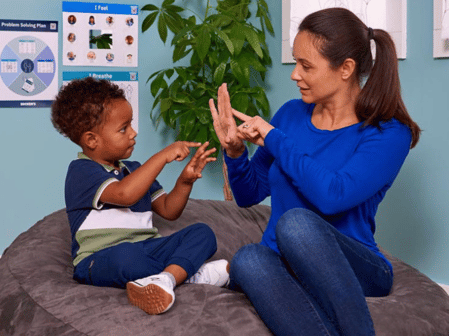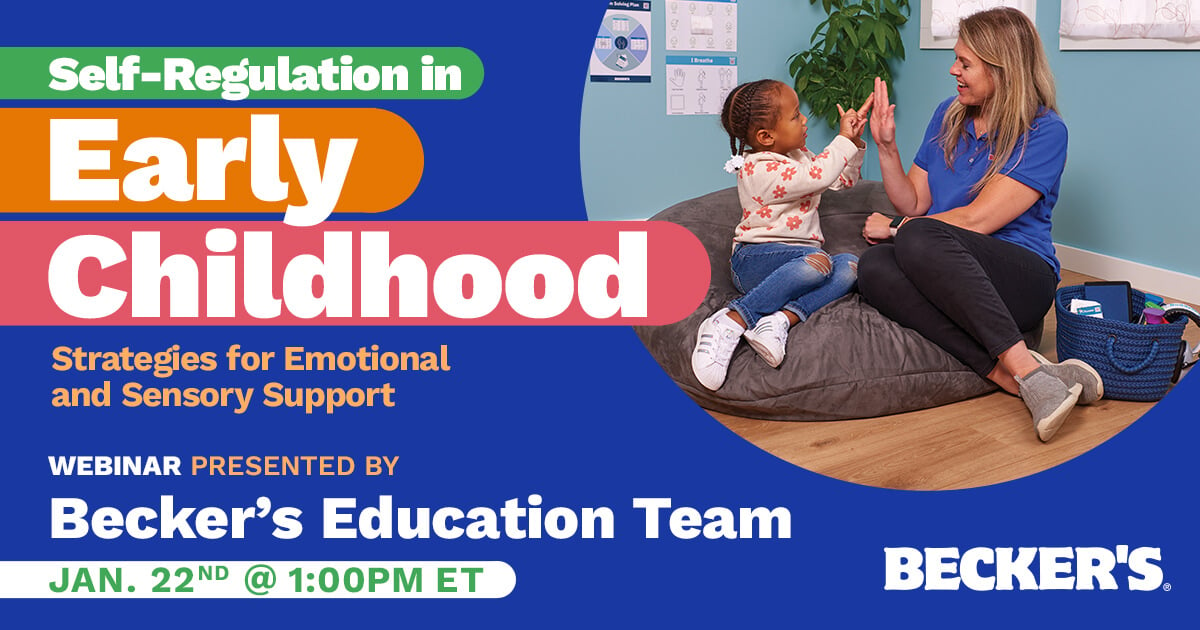Breathing Techniques for Self-Regulation

Breathing to Balance:
The Power of Breath in Regulation
Self-regulation is an essential building block of social-emotional development in young children. Breathing techniques are simple and effective in supporting emotional and sensory regulation. How could incorporating breathing techniques in your early childhood classroom make a difference?
Here are a few key benefits to consider:
-
Deep breaths activate our parasympathetic nervous system and tell the brain, “You are safe; you can relax.”
-
Focusing on their breath helps children develop self-awareness and attune to their emotions. Building these skills helps children notice and respond to various feelings.
-
Children feel confident and empowered when equipped with effective tools to help navigate difficult moments. Breathing techniques are a valuable addition to a child’s toolbox of social-emotional strategies.
-
Learning and practicing together is a powerful opportunity for adults and children to connect and co-regulate. Adults can learn breathing techniques with children; there is no need to be an expert already!
-
Breathing techniques integrated into classroom routines proactively support regulation and emotional well-being. Embed opportunities for deep breathing throughout your day.
-
Share breathing activities with parents and caregivers. To provide continuity across settings, helping children integrate these practices in a meaningful way
-
Most techniques don’t require specific supplies and can fit into short windows of time. Breathing activities can be accessed anytime, anywhere, and by children and adults alike.
Toddlers and very young children might still be working on mastering their understanding of automatic bodily functions like breathing. Explicit instructions can be helpful as children grow in their knowledge of prompts like “take a deep breath in” or “blow your breath out.” Visual cues can support children in this process. For example, a flower photo paired with the cue “breathe in to smell the flower” can help children connect with their bodies as they inhale. Likewise, an image of a pinwheel can be a helpful visual to go along with a prompt like “Blow all of your breath out to make the pinwheel spin.”
We know that children learn best when they are secure, comfortable, and in connected relationships with their adults and peers. Breathing techniques support all of these goals! Start by learning a breathing technique yourself. What do you notice about the experience? What cues are helpful? What do you find distracting? When teaching a new breathing strategy to children, be sure to introduce the technique during a time when everyone is comfortable and already regulated. Integrating breathing strategies into your classroom routine is an easy way to get a lot of practice with a technique.
Want to Learn More?
Join us for our January webinar to explore more strategies to support self-regulation in early childhood settings.
Check out this Self-Regulation Activity, which walks you through making your own Breathing Activity Card for Hand Breathing.
Resources
How Can Mindfulness Support Early Childhood Educators (Zero to Three)
Mindfulness Practices for Families (Zero to Three)
Self Regulation Skills: Breathing Strategies (NCPMI)
Mindfulness in Early Childhood (Becker’s Blog by Lisa Heintz)
Suggested Materials

Becker's Cozy Corner Solution for Preschool & Primary

Becker's Cozy Corner Solution for Educators

Becker's Cozy Corner Solution for Toddlers

Christine Murray is an Early Childhood Education Specialist with Becker’s Education Team.
As an educator, coach and leader, Christine is inspired by the curiosity, joy and wonder that children so generously model for us. She earned her M.A. in Innovative Early Childhood Education at the University of Colorado Denver and loves collaborating with and supporting others in the field. Grounded in relationships and guided by empathy, Christine is always learning, connecting and creating.

